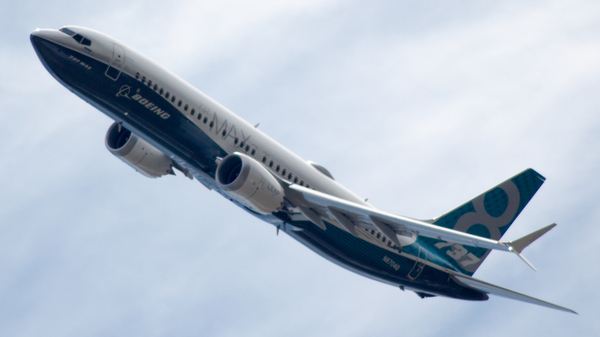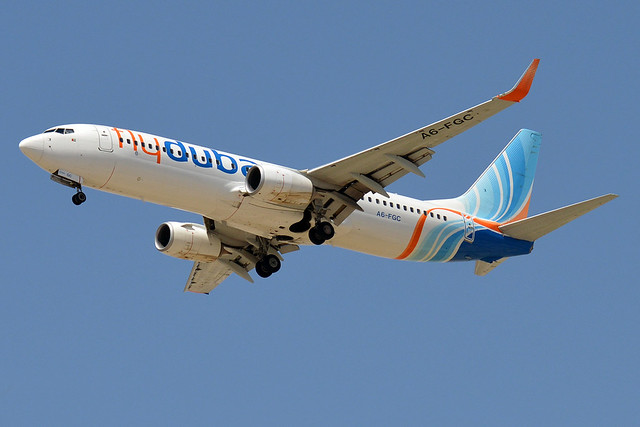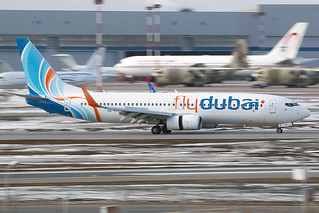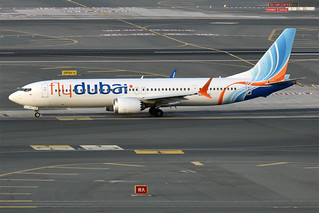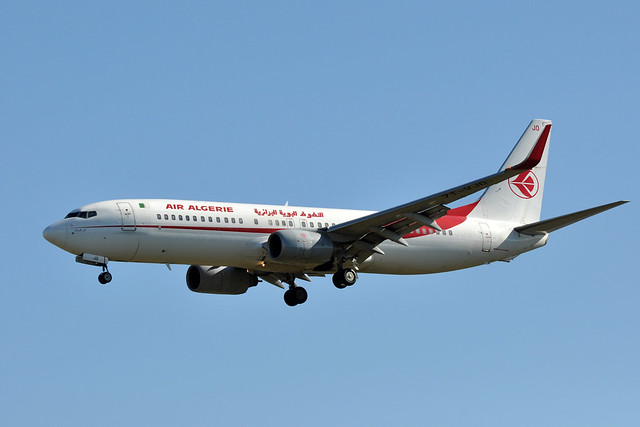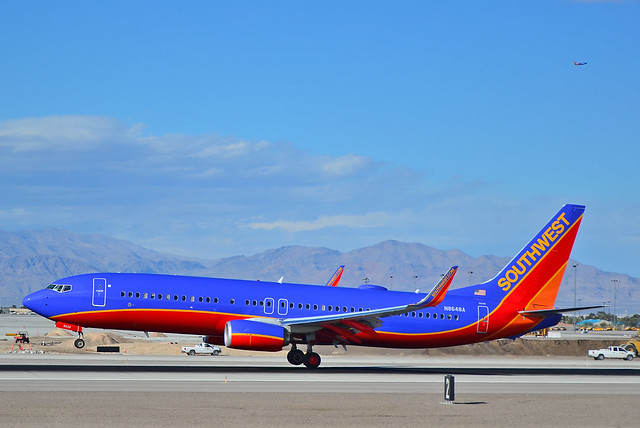Flydubai B738 at Rostov on Don on Mar 19th 2016, lost height on go around after stabilizer moved nose down following holding for 2 hours
Last Update: November 27, 2019 / 10:41:14 GMT/Zulu time
Incident Facts
Date of incident
Jan 1, 1970
Classification
Crash
Airline
Flydubai
Aircraft Registration
A6-FDN
Aircraft Type
Boeing 737-800
ICAO Type Designator
B738
The fatal air accident to the Boeing 737-8KN A6-FDN aircraft occurred during the second go around, due to an incorrect aircraft configuration and crew piloting, the subsequent loss of PIC’s situational awareness in nighttime in IMC. This resulted in a loss of control of the aircraft and its impact with the ground. The accident is classified as Loss of Control In-Flight (LOC-I) occurrence.
Most probably, the contributing factors to the accident were:
- the presence of turbulence and gusty wind with the parameters, classified as a moderateto-strong “windshear” that resulted in the need to perform two go-arounds;
- the lack of psychological readiness (not go-around minded) of the PIC to perform the second go-around as he had the dominant mindset on the landing performance exactly at the destination aerodrome, having formed out of the “emotional distress” after the first unsuccessful approach (despite the RWY had been in sight and the aircraft stabilized on the glide path, the PIC had been forced to initiate go-around due to the windshear warning activation), concern on the potential exceedance of the duty time to perform the return flight and the recommendation of the airline on the priority of landing at the destination aerodrome;
- the loss of the PIC’s leadership in the crew after the initiation of go-around and his “confusion” that led to the impossibility of the on-time transition of the flight mental mode from “approach with landing” into “go-around”;
- the absence of the instructions of the maneuver type specification at the go-around callout in the aircraft manufacturer documentation and the airline OM;
- the crew’s uncoordinated actions during the second go-around: on the low weight aircraft the crew was performing the standard go-around procedure (with the retraction of landing gear and flaps), but with the maximum available thrust, consistent with the Windshear Escape Maneuver procedure that led to the generation of the substantial excessive nose-up moment and significant (up to 50 lb/23 kg) “pushing” forces on the control column to counteract it;
- the failure of the PIC within a long time to create the pitch, required to perform goaround and maintain the required climb profile while piloting aircraft unbalanced in forces;
- the PIC’s insufficient knowledge and skills on the stabilizer manual trim operation, which led to the long-time (for 12 sec) continuous stabilizer nose-down trim with the subsequent substantial imbalance of the aircraft and its upset encounter with the generation of the negative G, which the crew had not been prepared to. The potential impact of the somatogravic “pitch-up illusion” on the PIC might have contributed to the long keeping the stabilizer trim switches pressed;
- the psychological incapacitation of the PIC that resulted in his total spatial disorientation, did not allow him to respond to the correct prompts of the F/O;
- the absence of the criteria of the psychological incapacitation in the airline OM, which prevented the F/O from the in-time recognition of the situation and undertaking more decisive actions;
- the possible «operational» tiredness of the crew: by the time of the accident the crew had been proceeding the flight for 6 hours, of which 2 hours under intense workload that implied the need to make non-standard decisions; in this context the fatal accident occurred at the worst possible time in terms of the circadian rhythms, when the human performance is severely degraded and is at its lower level along with the increase of the risk of errors.
The lack of the objective information on the HUD operation (there were no flight tests of the unit carried out into the entire range of the operational G, including the negative ones; the impossibility to reproduce the real HUD readings in the progress of the accident flight, that is the image the pilot was watching with the consideration of his posture in the seat trough the stream video or at the FFS) did not allow making conclusion on its possible impact on the flight outcome. At the same time the investigation team is of the opinion that the specific features of the HUD indication and display in conditions existed during final phase of the accident flight (severe turbulence, the aircraft upset encounter with the resulting negative G, the significant difference between the actual and the target flight path) that generally do not occur under conditions of the standard simulator sessions, could have affected the situational awareness of the PIC, having been in the highly stressed state.
The MAK provided lenghty analysis spanning 66 pages (starting page 104, ending page 169).
The investigation analysed that the crew was well rested The MAK wrote:
The analysis of compliance of the work and rest schedule within a record period (28 consecutive days) did not identify any violations. The crew had a sufficient amount of the preflight rest. As per the submitted data, the Fatigue Management System is implemented in the airline. The system encourages the fatigue-related confidential reports by the crewmembers for any stage of the flight operations (the preflight, in-flight, post-flight one). For a number of quantitative indicators the system goes beyond the national aviation legislation (that is it ensures the improved conditions for the crewmembers). Since 2009, the airline has accumulated 450 000 flights with a total flight time of more than 1 million hours. Within the period, 70 fatigue-related confidential reports were submitted. The majority of them were proactive by nature – as the crewmembers reported the fatigue presence and were removed from duty until they felt fit for flight operations.
The weather was no factor into the accident. The MAK wrote: "The forecast and actual weather en route, for the Rostov-on-Don destination aerodrome and the alternative aerodromes of Trabzon (LTCG) and Volgograd (URWW) did not impede the performance of the flight mission and met the IFR."
The MAK analysed that the first approach to Rostov was aborted and a go around initiated after the crew received an automatic call "Go-Around, Windshear ahead" warning at about 1100 feet, which had been generated by the Predictive Windshear warning system located in the weather radar (the reactive windshear warning system resides in the EGPWS and activates when the aircraft is in an actual windshear situation). The MAK wrote: "It was an almost instant response by the crew, about 1 s from the aural message trigger! This is the evidence of the crew having been prepared for such kind of events and well trained on the simulator as for the practice of actions in windshear. Most likely, the HUD had a positive effect at that, too, as the windshear warning is very vividly noticeable." with reference to the initiation of the go-around.
The MAK analysed that the captain initiated the go around as a windshear escape maneouver by applying maximum thrust but leaving the aircraft configuration unchanged (gear remaining down, flap setting remaining unchanged). The MAK wrote: "Initially in 10 sec, the PIC reached the pitch of 14…15º, following the HUD commands and the FCOM and QRH guidance. To counteract the excessive pitch-up moment, generated at the engine thrust increase to maximum, the PIC was forced to move the control column significantly forward."
The aircraft was to climb 1200 feet for the go around only, 1000 feet below the target altitude the ALT ACQUIRE mode activated for the flight director. The MAK wrote:
After the activation of the ALT ACQUIRE mode, without being cleared for further climb, the PIC started to reduce pitch with the additional deflection of the control column to “nose-down” (up to 8.5° with the maximum deflection available of 13.75) and, consequently, with the associated application of additional “pushing” forces. The actions in question with the engines on maximum thrust resulted in the increase of airspeed. The F/O drew the PIC’s attention to the need of monitoring the speed.
At the moment the Flight Path Symbol on HUD was higher than Guidance Cue, that is to maintain the target flight path the additional control inputs to “nose-down” were required. With the control column position unchanged the PIC, in addition, pressed the trim switches on the control wheel for about 4 s to nose-down (the angle of deflection of the stabilizer was changed for 1.8º) that resulted in the pitch reduction up to 3-4º and additional acceleration.
As the result the IAS exceeded the limit value (with flaps, extended on 30°, Vfe is 175 kt) and TE Flap Load Relief was activated. The flaps automatically retracted to 25 (the flap handle remained at the 30 detent). It should be noted that at the initiation of go-around IAS was equal to 160 kt that is the margin to the limit (with no “flap load relief”) at the performance of Windshear Escape Maneuver amounted to 15 kt.
At 22:42:34, the aircraft reached the target altitude of 2300 ft and, despite all the actions by the crew, continued to climb. The PIC, without being cleared for further climb, reduced the thrust (down to 83 % N1), although the windshear warning was still displayed. The reduction of the engines thrust led to the reduction of the pitch-up moment. The control column was returned to an almost neutral position.
The IAS had continued to increase for a while (the maximum reached value was 182 kt), what the F/O drew the PIC’s attention to again.
Subsequently the pilots discussed the overspeed condition, it remained unclear however, whether any of them had recognized the flaps relief.
While the aircraft entered a hold to wait for improvement of weather a number of other aircraft attempted the approach to Rostov and went around reporting windshear too.
The captain decided to attempt another approach following following considerations:
1) The improvement of weather conditions that had been monitored by the crew as far back as the point of go-around allowed hoping for a successful approach after a certain time.
2) The sufficient quantity of fuel allowed to proceed the holding pattern not less than 2 hours and did not constitute the time pressure.
3) The actual weather and the forecast weather at the alternate aerodromes (Volgograd and Mineralnye Vody) were favorable, which did not involve hasty actions either.
4) The aircraft was in immediate proximity to the Rostov-on-Don destination aerodrome, with radio and navigation aids set and ready for approach.
Taking the decision to perform another approach the PIC, most probably, took into account that in case of landing at the Rostov-on-Don airport the loss of time in the holding area (about 2 hrs) would not be crucial. The passengers will be delivered to destination; it will still be possible to perform the return flight, as the duty time will not exceed the allowed value. The potential diversion to the alternate aerodrome would entail many problems: the overnight stop and the associated significant delay of the flight, the passengers’ accommodation, the breach of the operational schedule of the aircraft, the other expenses both for the airline and for the crew. These circumstances could have enhanced the motivation of the PIC to perform landing right at the destination airport (Rostov-on-Don). The PIC undertook every possible step to complete the main task, that is to deliver passengers to destination.
The captain discussed the decision with dispatch via Satcom for a considerable time, the company supported the decision by the captain. Following the second approach the airline recommended to divert to Mineralnye Vody and transmitted a flight plan for the 270nm trip taking 44 minutes and requiring 1728 kg of fuel. The crew briefed the diversion to Mineralnye Vody in case of another go around and again briefed the windshear escape maneouver.
The MAK analysed:
In this context, the PIC’s decision to proceed a holding pattern for another approach under the actual circumstances had been the best possible and reasoned decision. This very decision was coordinated with the airline. Taking into consideration the sufficient quantity of fuel to hold and divert to an alternate aerodrome, actual weather and favorable forecast as for the alternate aerodrome, this solution did not pose risks and did not threaten the successful outcome of the flight. The crew undertook all the necessary steps both for the successful landing at the destination aerodrome and the diversion to an alternate aerodrome.
1:40 hours after the first go around and 21 minutes prior to impact ATC advised the crew that the weather office had not advised about any windshear on the runway (previous weather reports had forecasted moderate windshear). The captain decided to attempt the approach, coordinated the diversion to Mineralnye Vody in case of a go-around with the controller, the aircraft left the hold and positioned for the approach, Vref had been determined at 133 KIAS, the captain applied a 20 knots wind correct and thus set Vapp to 153 KIAS. The MAK analysed that the crew had "appropriately identified the approach
speed." and added: "At the same time the crew, having in mind the difficulties during the first go-around, coordinated with the controller that in case of go-around they would immediately climb FL080."
The HUD was switched to an IMC mode. The MAK analysed based on engineering simulations that the aircraft performance had not been impaired by icing. The crew configured the aircraft for landing and performed the ILS approach to runway 22. The aircraft intercepted the glideslope while maintaining 2250 feet MSL, wind information from tower indicated winds from 230 degrees at 12m/s (23 knots) gusting 18m/s (35 knots). Descending through 2165 feet the captain disengaged the autopilot, descending through 1960 feet the autothrust was disengaged. The landing checklist was performed.
Descending through 1000 feet the aircraft was nearly stabilized with all parameters within limits, the captain announced "stabilizing now", the MAK analysed probably referring to the IAS of 163 KIAS 10 knots above Vapp.
The MAK analysed:
The aircraft was flown a little bit higher of glideslope (0.3…0.2 dots), and the PIC was applying the corrective “pushing” movements on the control column to maintain the glide path descent more precisely, along with that the thrust (N1) was increased from 65% to 70%. Over the same moment the aircraft encountered wind gust. The combination of these three factors resulted in the IAS, after decreasing to the target value of 153 kt, increase within a second for 15 kt (from 153 to 168 kt), in 2 next seconds it additionally increased up to 176 kt. In such a way the actual speed exceeded the target one (153 kt) for more than 20 kt. This overspeed was responded by the F/O at 00:40:49: «Check the speed». It is the overspeed for a considerable value that, most probably, was the reason for the PIC to make decision on go-around. The PIC took the decision right away, called it out to the F/O and similarly was responded immediately.
At 00:40:50 the TO/GA mode was activated with the power levers advanced to full thrust.
With the thrust levers advanced to full thrust rather than remaining at TOGA setting the captain probably again initiated the "windshear escape maneouver", however, no windshear warning had occured (unlike the first approach). The first officer therefore queried whether to reduce flaps and retract gear, which the captain agreed. As such, a standard missed approach was carried out though with maximum thrust.
The MAK analysed:
Before the second go-around there was no windshear warning activation, as well as there was no explicit callout by the PIC on the type of maneuver (the airline OM did not stipulate such a specification of commands), that is why the F/O could have perceived the maneuver to come as the standard go-around – particularly given that he had just drawn the PIC’s attention to the deviation (on speed) of the stabilized approach criteria. It is the F/O who offered to PIC to retract flaps to 15, as it is prescribed at the standard go-around. The PIC immediately agreed with the F/O, although according to SOP (item 12.1.1), the decision-making and the respective callout to retract flaps should come from the PIC himself with a simultaneous GO-AROUND callout.
Thus, with the consideration of the subsequent landing gear retraction following the F/O’s report on positive rate of climb, actually the crew was performing a standard go-around procedure at the low weight aircraft with the maximum thrust of the engines (N1=101%), as it is prescribed by the Windshear Escape Maneuver. Taking into account that in preparation for the second approach it is this procedure that had been talked over by the crew, the indicated factor may have played a certain role, as later the whole range of the erroneous and inappropriate actions by the PIC resulted in a loss of control of the aircraft. This very moment, most probably, had been a turning point in the chain of the events.
At 00:40:54, the F/O reported go-around to the Rostov Tower controller and was instructed to contact the Rostov Radar controller. The crew did not contact the Radar controller.
The increase of the engines thrust combined with the retraction of flaps and landing gear led to the significant increase of pitch-up moment (more than at the first go-around); to counteract it the substantial push of the control column was required with the application of pushing forces on the control column of up to 50 lb (23 kg), that had been preserved for quite a long time (more than 40 sec). The piloting - especially the precise piloting - of an out of trim aircraft (unbalanced on forces), is always complicated and implies the increase of the pilot’s workload, including the psychoemotional component. Indeed, the nature of the control wheel motion on pitch after the initiation of go-around is loose (the longer movements) and abrupt (reactive) with the noticeable delay. This very nature of the piloting is always the evidence of the flight mental mode disruption and the absence of forecast on the further behavior of the aircraft (the pilot “is behind” the aircraft, the aircraft flies “ahead” of the pilot).
The MAK annotated:
1. It should also be taken into account that the stated forces on the control column PIC, most probably, had maintained by one (left) hand. The other hand was on power levers (the confirmation to this is stated here below).
2. Hereinafter the integral “flight mental mode” means not only the pilot’s reflection of the flight process, that is matching of real aircraft attitude and mode to the perceived ones, but also the ability of the pilot to fly “ahead of the aircraft”, including to predict the aircraft behavior in response to the control inputs.
3. As per the information, submitted by the airline, the PIC was well experienced in performing go-arounds in real flights (6 go-arounds not counting the first goaround at the day of the accident, of which 3 as a PF and 3 as a PM). The airline could not provide the information on the reasons for go-arounds.
The captain was supposed to establish 15 degrees nose up pitch, however, did not acquire that pitch, changing the pitch in steps, as such the aircraft did not maintain the climb path (unlike the first go around). The MAK wrote:
The average pitch in climb was equal to about 10º, which was obviously insufficient for the given conditions, taking into account that:
- the thrust-to-weight ratio of the aircraft was high (the aircraft was of a relatively low weight of 54 t. and the engines were delivering the maximum possible thrust);
- the drag of the aircraft was significantly less against the first go-around (landing gear up, flaps 15º).
The PIC, apparently, failed to consider all these factors. At the same time the F/O, observing the PIC, having difficulties in piloting the aircraft drew his attention to the necessity to maintain the required pitch.
The PIC briefly (for a second) increased pitch up to 18.5º, then reduced it again to 4º...5º, having applied the disproportionately significant pushing movements on the control column (more than ½ of travel from the neutral position to fully forward) and generated the vertical G of 0.43 g.
In reaction to such actions by the PIC, the F/O prompted once again:
00:41:18,0 00:41:19,4 F/O Now keep it, keep it to fifteen, keep it…
Note: At this moment, there was a minor (down to 97 % N1) decrease in engines power with the subsequent restoration of the maximum thrust. The investigation team is of the opinion that this very decrease was incidental and is associated with the PIC’s hand on power levers at the above-indicated significant change of the vertical G.
Having focused the attention on maintaining pitch, both pilots had completely lost the awareness of on the airspeed, that was gradually increasing and at 00:41:10 reached the limit Vfe (200 kt) for flaps 15º, after which the T.E. FLAP LOAD RELIEF was activated. The flaps were set to 10º. In such a way, it was a repetition of the situation that occurred during first go-around.
With that, the F/O, as opposed to the first go-around, did not draw the PIC’s attention on the speed exceedance. The engines kept on running at the maximum thrust up to the impact with ground; the flaps handle remained at the 15º detent.
The situation when the attention of the crew was excessively concentrated on the pitch control of the aircraft led to the substantial narrowing of perception of the other information (“the tunnel effect”). The number of parameters, having been monitored and analyzed at a time, had decreased sharply, down to about one or two.
The onset of the critical situation started at 00:41:30.5. In proceeding the piloting of the out of trim aircraft (unbalanced on forces), and obviously enduring inconvenience; at the present parameters of flight: Н ≈ 3350 ft QNH (935 m QFE), IAS – 210 kt, pitch – 10º to nose-up, the stabilizer setting – 2.7º to nose-up, flaps 10º, the power mode of the engines – the maximum thrust, the PIC pressed the stabilizer trim switches to nose-down.
The HUD indicated a pitch up was needed at that point. The MAK analysed:
In other words, most probably the PIC, having acted in such a manner, tried “to relieve” the pushing forces on the control column, rather than to transition the aircraft to nose down. However, along the stabilizer trim, the pilot did not return the control column to neutral position, with that the stabilizer trim switch remained pressed for an abnormally long time (12 s!!!).
Note: 1. The investigation team did not identify any signs of failure or the uncommanded movement of the stabilizer. The direction and duration of the stabilizer trim are consistent with the respective discrete signals registration (the FDR records the discrete signals, associated with the commands to the nosedown and nose-up stabilizer trim in a manual or automatic mode). The short time pull of the control column (at 00:41:39) beyond neutral resulted in the stabilizer trim stop that is consistent with the inherent logic of the control system function.
2. Most likely, by this moment of time the flight mental mode at the PIC had been completely disrupted, whereas his emotional condition may be characterized as “distress/a very strong stress”. It is confirmed by the fact that from 00:41:33 and up to the end of the flight the quite dynamic pedal inputs are recorded, with that they had not been anyhow justified by the flight situation. It is known from the practice of the air accident investigation that when the pilots encounter complete spatial disorientation and lose the ability to appropriately evaluate the situation, often they start to do the involuntary (reflex) control inputs. In this sense, as for the modern transport aircraft, the deflection of pedals that, usually, are not used in flight, is the most indicative symptom. After the forward deflection of the left pedal within a time of 00:41:33 – 00:41:39, the aircraft bank was changing with a constant angular rate from 5 to the right to 12 to the left with the practically neutral position of the control wheel that again demonstrates the crew failure to monitor all the necessary parameters.
The actions in question (the substantial stabilizer trim to nose-down along with the keeping and even some increase of the average deflection of the control column to nose-down) led to the rapid decrease of pitch (the average pitch rate about 6 /sec) and the aircraft transition from the climb to descent with the significant negative G (initially minus 0.3…minus 0.4 g, then – up to minus 1.07 g), at that the near-zero and negative G (
The MAK analysed whether the first officer should have detected the incapacitatio of the captain and taken control stating that according to the FCOM detection of incapacitation and take over of control should occur if there was no verbal reply by the pilot flying to two communications by the pilot momitoring addressing the pilot flying, or no verbal reply to the pilot monitoring pointing a significant deviation from the intended flight path, or no reaction to a system malfunction. The captain did react to the communication by the first officer, though in one word only. The MAK wrote:
The events of the psychological incapacitation, when the PF verbally responds to the communication and physically exercises the control inputs, but these are obviously inconsistent with the current flight environment, as a rule, are not incorporated into the airlines OM. The Flydubai airline OM did not state such occurrences either. Consequently, the PM for more than 30 s had been prompting the correct actions to PF and at a certain point even tried to intervene in the control with prompting the correct direction of the control column deflection “by the action”. Still, because of the continued inappropriate actions by the PIC and the specific features of the pitch control system (Sections 1.16.7 and 1.16.8), the actions by the F/O had been unsuccessful.
With respect to the trim relief the MAK analysed:
As for the accident flight, both in progress of the first and the second go-around the PIC, when pressing the trim switches, did not return the control column to neutral, thereby increasing the pitch-down moment. In the course of the meetings with the representatives of the command, flight crew and instructor personnel of the airline the view has been expressed by them that the PIC could not have possessed the sufficient level of knowledge on the peculiarities of the forces trim on the aircraft of the Boeing 737 type.
The investigation team also notes that in case of long-time press on the stabilizer trim switches there is a danger of “loss” of the feedback on forces. Due to the small amount of forces the pilot’s finger gets used to them quickly, which may lead to the “prolongation” of the earlier started action, that is to the “holding” of the trim switches. The non-optimal working condition of the pilot or the situation, when the pilot does not achieve the required goal (the forces relief on the control column) with the mentioned action, can be contributive in the case.
...
The PM has the opportunity to stop the stabilizer trim by pressing the trim switches in the opposite direction (as for the situation of the accident flight with the control column, for a long time had been kept by the PF at the nose-down deflection, for the PM to use “his own” stabilizer trim switches it had been necessary to use the stabilizer override switch (see also Section 1.18.2).
In the factual section 1.18. the MAK laid out how the electrical trim and the cut out switches inside the ontrol column worked stating, that with a deflection of the control column of more than 4 degrees nose down any electrical trim up command would be blocked (or with the control column more than 4 degrees nose up any electrical trim down command would be blocked), whereas with the control column within -4 and +4 dgerees of deflection in case both trim up and trim down commands would be registered causing the stabilizer to stop (with both commands present at the same time). Only the override switch would permit to have the trim up command pass through in case of the control column being deflecte more than 4 degrees nose down.
The MAK analysed with respect to the head up display (HUD):
One more specific feature of the use of HUD is that the pilot only at his certain relative head posture against HUD can observe the “complete” picture. At the considerable change of the pilot’s head posture against HUD, for example, at the extreme maneuvers, severe turbulence, upset encounter (notably with the reach of near-zero and negative Gs) the portion of the HUD picture may be lost out of the pilot’s vision field. Following the investigation team request the HUD manufacturer responded that at its certification there were no flight assessment of the unit carried out into the entire range of the operational G (up to -1 g) for the Boeing 737 aircraft (since it is not stipulated by the certification requirements) and the respective test pilot evaluation does not exist either.
...
Fig. 71 and Fig. 72 represent the HUD reconstructed images at the points of time, coherent with the maximum reached negative G (-1.07) and the moment of the F/O’s interference into the control. It is apparent that HUD switched to the display mode, corresponding to upset. The HUD is switched to this mode, when the nose-down pitch exceeds 20 degrees.
According to the HGS Pilot Guide, this mode enhances interpretation of an unusual attitude by the pilot. All the “redundant” information is retracted out from the HUD screen. These are only altitude and IAS scales, pitch and roll together with the slip indicator that are displayed. In the progress of the investigation team activities team some pilots noted that in the stress environment the applied indication (two nonparallel lines) might be misinterpreted by the pilot, as the indication, similar in appearance, is used to display RWY at the HUD operation in the AIII mode.
Thus, taking into account the lack of the objective information on the HUD operation (there were no flight tests of the unit carried out in the entire range of the operational G; the impossibility to reproduce the real HUD readings in the progress of the accident flight, that is the image, the pilot was really watching with the consideration of his posture in the seat, through the stream video (see Section 1.16.9) or at the FFS) did not allow making unambiguous conclusion on its possible impact on the flight outcome.
At the same time the investigation team believes that the further elaboration of the methodological issues of the practicability and the use of the HUD at different segments of flight, as well as the carry out of the additional flight tests into the entire operational range and the works on the improvement of the data presentation (with the consideration of the opinion of the experts in ergonomics and aviation psychology) may mitigate the risks of the erroneous interpretation of readings in the stress situation.
Incident Facts
Date of incident
Jan 1, 1970
Classification
Crash
Airline
Flydubai
Aircraft Registration
A6-FDN
Aircraft Type
Boeing 737-800
ICAO Type Designator
B738
This article is published under license from Avherald.com. © of text by Avherald.com.
Article source
You can read 2 more free articles without a subscription.
Subscribe now and continue reading without any limits!
Read unlimited articles and receive our daily update briefing. Gain better insights into what is happening in commercial aviation safety.
Send tip
Support AeroInside by sending a small tip amount.
Related articles
Flydubai B38M at Dubai on Apr 7th 2024, could not fully retract gear
A Flydubai Boeing 737-8 MAX, registration A6-FKH performing flight FZ-17 from Dubai (United Arab Emirates) to Doha (Qatar), was climbing out of…
Flydubai B738 at Dhaka on Aug 12th 2023, rejected takeoff due to bird strike
A Flydubai Boeing 737-800, registration A6-FGC performing flight FZ-502 from Dhaka (Bangladesh) to Dubai (United Arab Emirates), was accelerating for…
Flydubai B738 at Kathmandu on Apr 24th 2023, bird strike on departure
A Flydubai Boeing 737-800, registration A6-FED performing flight FZ-576 from Kathmandu (Nepal) to Dubai (United Arab Emirates) with 167 people on…
Flydubai B39M at Male on Mar 28th 2023, burst tyres on landing
A Flydubai Boeing 737-9 MAX, registration A6-FNC performing flight FZ-1569 from Dubai (United Arab Emirates) to Male (Maldives), landed on Male's…
Flydubai B738 near Shiraz on Oct 27th 2022, captain incapacitated
A Flydubai Boeing 737-800, registration A6-FED performing flight FZ-1942 from Tashkent (Uzbekistan) to Dubai (united Arab Emirates) with 172 people…
Newest articles
Algerie B738 near Algiers on Apr 17th 2024, cracked window
An Air Algerie Boeing 737-800, registration 7T-VJO performing flight AH-1036 from Algiers (Algeria) to Lyon (France), was enroute at FL340 about…
Southwest B738 at St. Louis on Apr 19th 2024, engine failure
A Southwest Airlines Boeing 737-800, registration N8648A performing flight WN-5907 from St. Louis,MO to Sacramento,CA (USA), was climbing out of St.…
Subscribe today
Are you researching aviation incidents? Get access to AeroInside Insights, unlimited read access and receive the daily newsletter.
Pick your plan and subscribePartner

A new way to document and demonstrate airworthiness compliance and aircraft value. Find out more.

ELITE Simulation Solutions is a leading global provider of Flight Simulation Training Devices, IFR training software as well as flight controls and related services. Find out more.

Your regulation partner, specialists in aviation safety and compliance; providing training, auditing, and consultancy services. Find out more.
AeroInside Blog
Popular aircraft
Airbus A320Boeing 737-800
Boeing 737-800 MAX
Popular airlines
American AirlinesUnited
Delta
Air Canada
Lufthansa
British Airways
